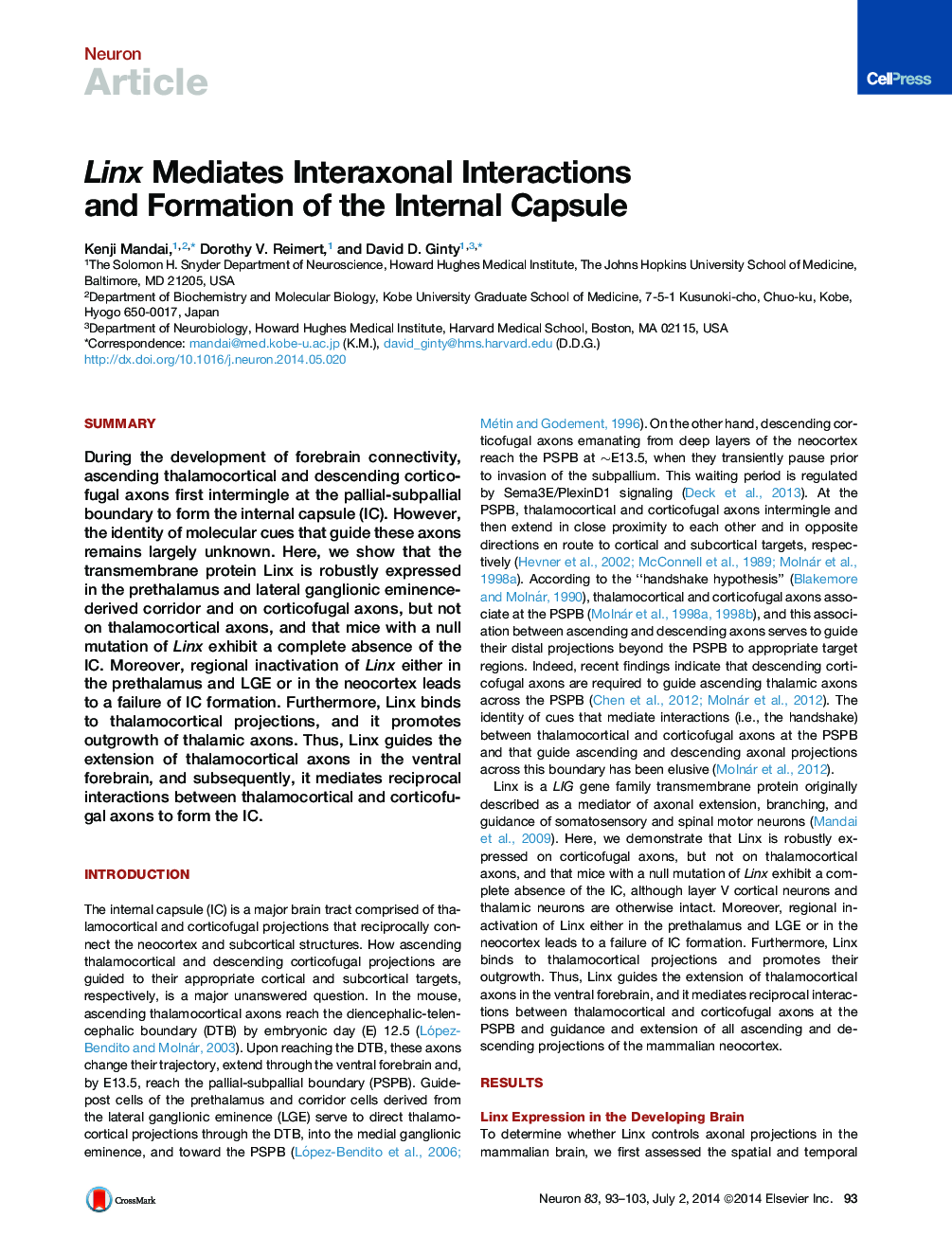| Article ID | Journal | Published Year | Pages | File Type |
|---|---|---|---|---|
| 4321108 | Neuron | 2014 | 11 Pages |
•Linx is expressed on corticofugal axons, but not on thalamocortical axons•Linx binds to thalamocortical axons and promotes their outgrowth•Mice lacking Linx exhibit a complete absence of the internal capsule•Ablation of Linx in corticofugal neurons results in axonal stalling at the PSPB
SummaryDuring the development of forebrain connectivity, ascending thalamocortical and descending corticofugal axons first intermingle at the pallial-subpallial boundary to form the internal capsule (IC). However, the identity of molecular cues that guide these axons remains largely unknown. Here, we show that the transmembrane protein Linx is robustly expressed in the prethalamus and lateral ganglionic eminence-derived corridor and on corticofugal axons, but not on thalamocortical axons, and that mice with a null mutation of Linx exhibit a complete absence of the IC. Moreover, regional inactivation of Linx either in the prethalamus and LGE or in the neocortex leads to a failure of IC formation. Furthermore, Linx binds to thalamocortical projections, and it promotes outgrowth of thalamic axons. Thus, Linx guides the extension of thalamocortical axons in the ventral forebrain, and subsequently, it mediates reciprocal interactions between thalamocortical and corticofugal axons to form the IC.
